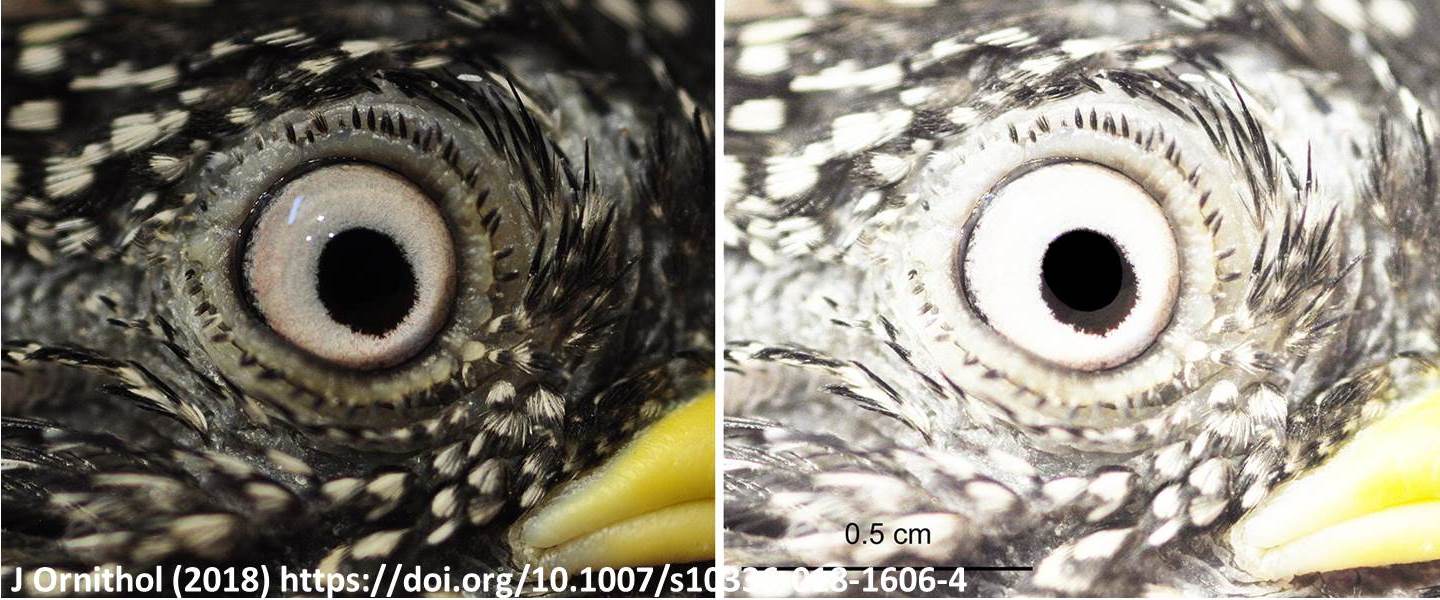For the first time the unique coloured pattern of the iris of buttonquails (Turnicidae) is described. This unique pattern is due to the presence of a dark-brown crescent in the iris below the pupil, whose form and extent varies in response to light conditions. This dark crescent is present in the eyes of all individuals of Turnix species at every life stage, a consistency that has not been previously observed for the iridal marks found in other avian groups. This consistency suggests that the crescent-shaped spot in buttonquails' eyes is a character subjected to natural selection, probably related to light regulation. Although there is no direct evidence for the function of the dark crescent in the iris of buttonquails, since these birds usually live under the shady cover of low and partly open scrubland, grassland and farmland, it can be argued that the dark crescent may be an adaptation to exposure to sudden changes in light when the birds are foraging between dark shade beneath full cover and sunny conditions in the open. This hypothesis seems to be supported by the adaptability of the size and form of the dark crescent, and thus its suggested functionality, in response to changes in light intensity. In summary, the dark crescent of the iris may be a sophisticated system for improved vision under certain light exposure. informacion[at]ebd.csic.es: Gutiérrez-Expósito (2018) Asymmetric iris heterochromia in birds: the dark crescent of buttonquails. J Ornithol https://doi.org/10.1007/s10336-018-1606-4
https://link.springer.com/article/10.1007/s10336-018-1606-4#citeas








 Las altas temperaturas están provocando que las lagunas y las marismas de Doñana pierdan agua rápidamente
Las altas temperaturas están provocando que las lagunas y las marismas de Doñana pierdan agua rápidamente



